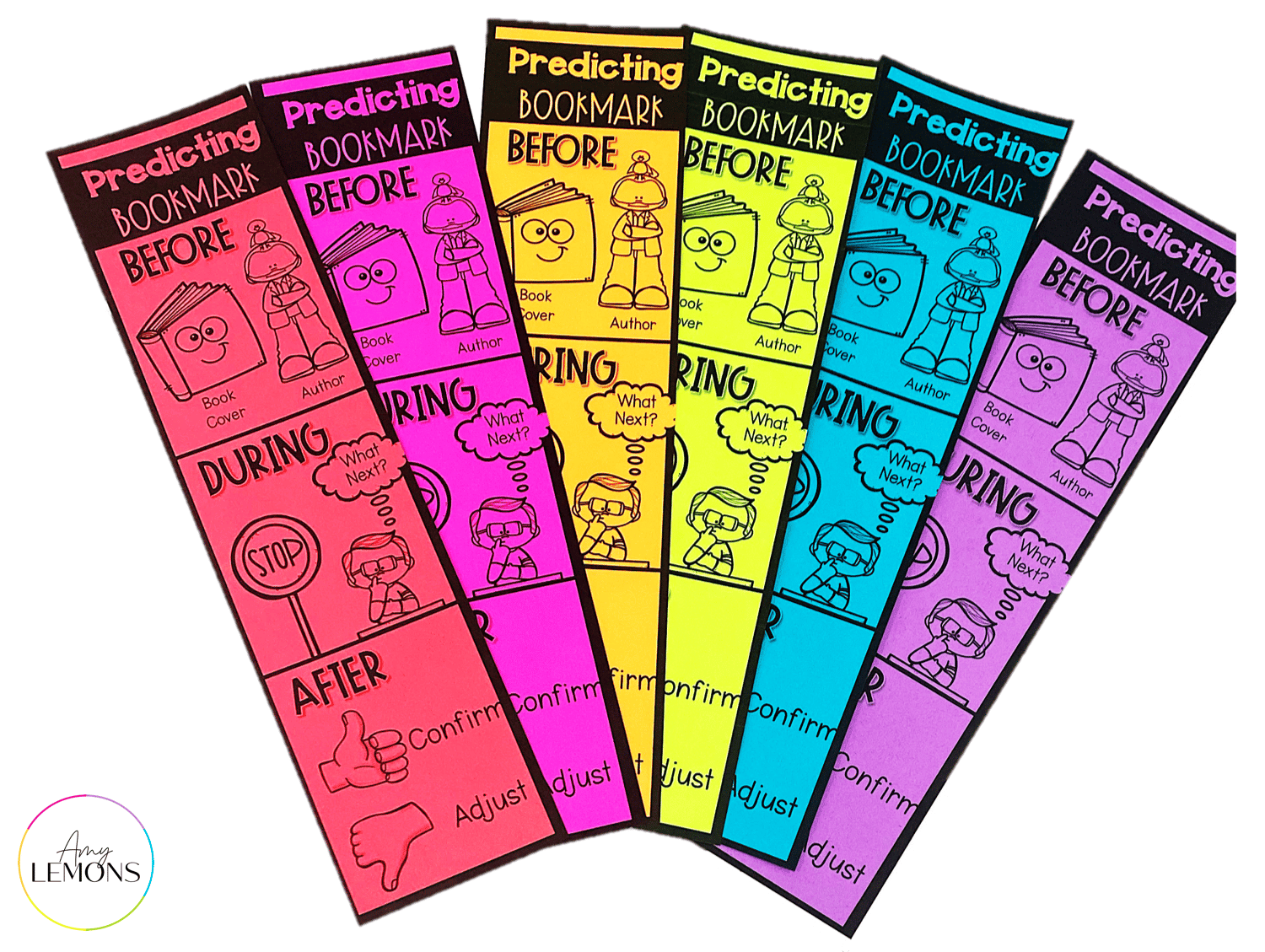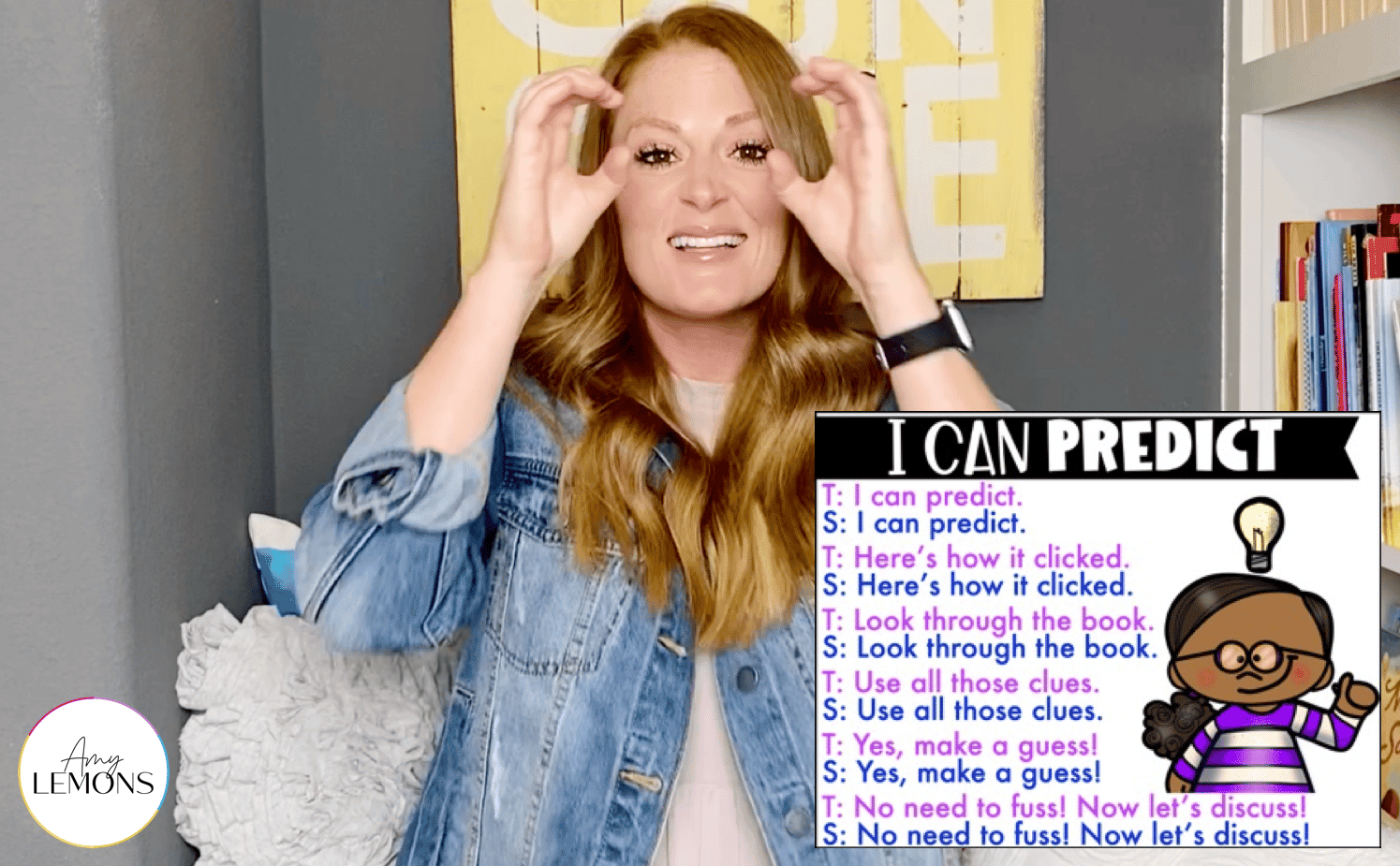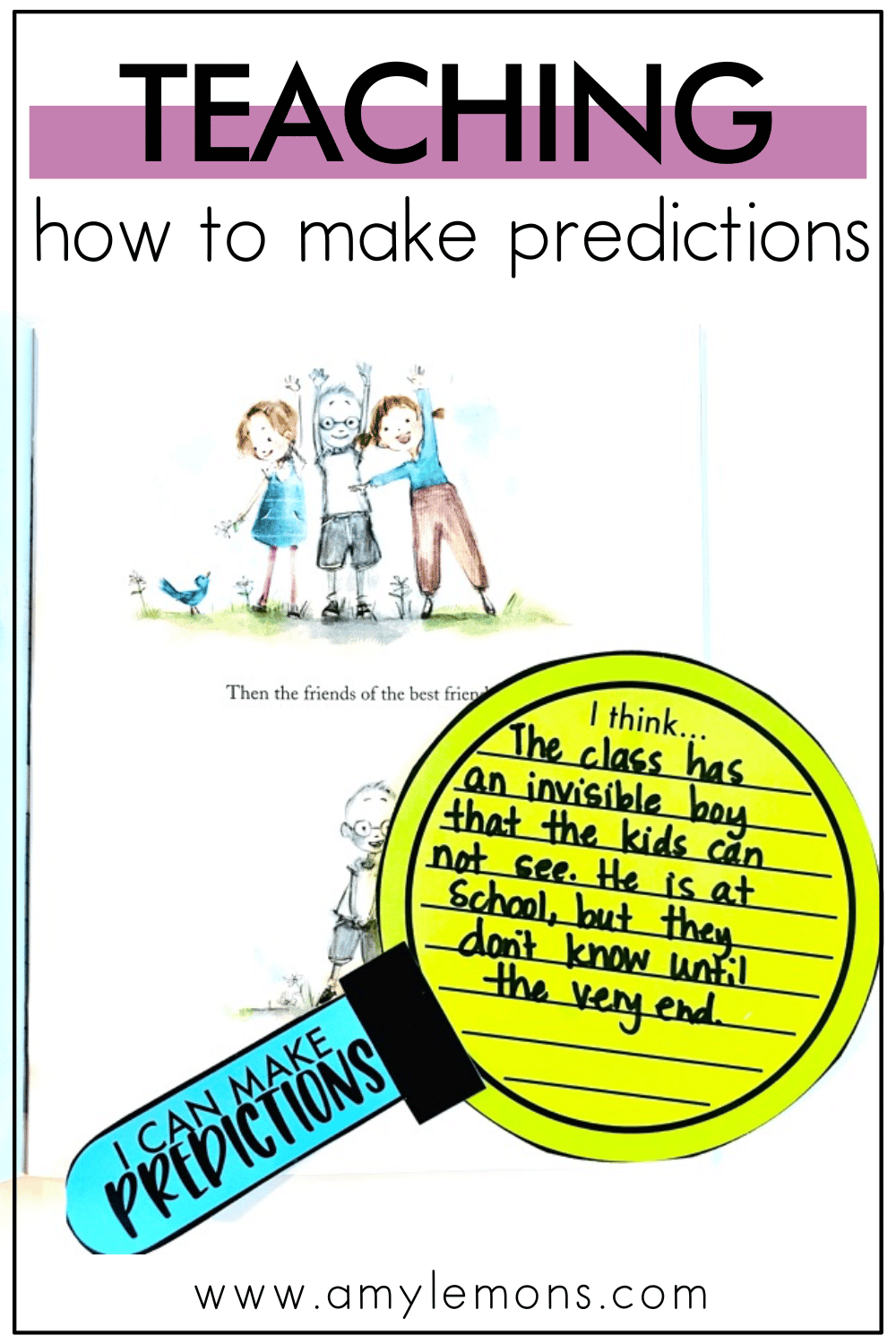

Here’s the caveat to teaching students how to make predictions. Predicting typically requires two elements, clues picked up from the book’s text and the reader’s own personal experiences. Well, let’s just say when you’re teaching children 9 years and younger, they haven’t quite lived a whole lot of life yet which means they have a few experiences to draw from.
This can present itself as a challenge for teachers but not if we ensure that we’re using tools that align with the student’s level of life expertise, helping to guide them through prediction strategies every time they read, and breaking it down into smaller pieces that are easier to understand.
When I’m teaching students how to make predictions, I like to focus on the three major categories of the text. The before, during, and after. It is also important to begin with smaller bodies of text. Making predictions needs to be done in smaller doses to help students catch on more quickly, draw from their pocket of life experiences, and have a guide that helps them along the way.
Four ways I accomplish this style of teaching how to make predictions are by using predicting bookmarks, sharing a chant, utilizing reading passages, and predicting with BME (beginning, middle, and end.)
Let’s dive into each of these ideas for teaching how to make predictions! Also, you’ll find a predicting FREEBIE down below.
[But before we get started, I wanted to mention that all of the activities you see inside this post are from my Making Predictions and Synthesizing Reading Toolkit (a set of reading activities that focus on a specific skill that can be used with any text!) You can learn more about that resource HERE.]
Now, Let’s begin.

What I love most about teaching students how to make predictions is how easy it becomes when we break it down into 3 stages. As a whole, it can feel overwhelming. But when we focus on the before, during, and after, we can hone in on specific moments throughout the text to piece together our ideas about the entire story.
In the beginning, students are looking at the title and book cover and they are learning about the author to get a sense of what the book will be about.
Then, we dive in and start reading! As students are reading, they are picking up on little clues about what will happen next. Each time a new clue comes up, the more interested they are in finishing the story!
Finally, once we’ve reached the end, students can learn whether their predictions were correct or if they need to adjust.
Making predictions with students can be really fun, almost mysterious. But we can always use a little backup in getting their little brains working to try and solve the plot of the text. I like to have something in front of them that reminds them about predicting as they go. Using these Prediction Book Marks, students have a reference for how to use their prediction skills!

If you want students to get a grasp of what making predictions looks like in a simplified way, you can throw in this really easy chant!
With the I Can Predict chant, we’re providing step-by-step instructions on using your clues to make a guess, but also how predictions don’t have to be perfect or right! As a class, we can draw on each other’s ideas until we think we’ve got it figured out.
When we’re making predictions as we read the text, it’s a great incentive to keep on reading. Students want to know if they’ve guessed right!
You can check out THIS video if you want to get the rhythm of this chant right! Feel free to share it with your students, too.

It’s great to use books and carefully selected texts to practice making predictions, but one of my favorite ways to teach students how to make predictions is using smaller reading passages.
Using simple and concise reading passages makes it easier for students to understand what is happening in the text. They can make their predictions quicker and really get a feel for how it works to connect various story elements and brainstorm ideas on where a story is headed.
Smaller reading passages can be printed off for each individual student to highlight or underline as they begin to look for evidence to support their predictions. Or they can work in groups to make predictions together!
This is the perfect starting point.
Then, as students progress and age, you can move on to larger bodies of text. With prediction skills, students will be eager to read stories with more intricate plots!
[You can learn more about how we use reading passages for making predictions in our Reading Toolkit for Making Predictions and Synthesizing on my TPT shop HERE.]

Just like the Prediction bookmarks mentioned above, you’ll find that breaking down predictions into categories for the Beginning, Middle, and End of the story will create digestible bits of information for young kids to grasp.
Using BME, students can begin by using clues from the first couple of pages to guess what the story will be about. As they get closer to the middle or climax, we can pause and allow students to guess what the main plot of the story will be. When the climax has been revealed, students are then able to predict how it all will end.
We ask questions at each stage like…
Beginning:
Middle
End
As a class discussion, we can ask clarifying questions to assist and model for students what we should be thinking about as we are predicting.
You can use this BME anchor chart for teaching how to make predictions in your classroom for FREE! Just head over to THIS post to download it plus a couple of extra activities now!
Don’t forget, the most important part of teaching students how to make predictions is the discussion that takes place. Taking time to chat with students about their predictions, evidence, and where they may have gone wrong or right will pique their interests for future discussions. But more importantly, for more reading!
Teaching students how to make predictions is all about repetition. You model, you break it down into digestible pieces, and you discuss it together.
What are your favorite activities for teaching students about making predictions? Let me know below!
BTW: Every activity mentioned in this post can be found inside our Reading Toolkit for Making Predictions and Synthesizing. Featuring over 20 activities, you’ll have a host of resources in your arsenal for teaching students how to make predictions using any text! Find that on my TPT shop HERE.]


Hey, y’all! My name is Amy Lemons and I am passionate about providing students with both engaging and effective standards-based Math and ELA lessons.

Sample a day of Rooted in Reading with these lesson plans and activities for Reading Comprehension, Vocabulary, and Grammar!